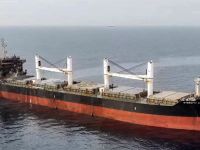Introduction:
Among the features that we bring foe AlbBawaba we preserve special place for the R&D which is the base for future developments in the Oil industry. We are honored to publish this feature of CGG on its R&D policy.
The CGG Group's research policy is founded on two main strategies. The first is to speed up our innovation work in our core businesses (seismic acquisition and processing on land, at sea and in wells, and the manufacture of equipment and software).
This has led to the definition of two strategic programmes named Acquisition 2000 and Geovecteur 2000. The second strategy is to develop new technologies for what undoubtedly represents the future of our industry: reservoir geophysics. These new technologies form the basis of our other two strategic programmers entitled Geovista and Reservoir geophysics.
Together, these four strategic programmers represent more than 90 percent of the Group's R&D budget which nevertheless does also concentrate on the development of other geophysical methods implemented by our General Geophysics operating division and on our new data management business via our subsidiary CGG-PECC.
Acquisition 2000:
The aims of this strategic programme are to improve the quality of the seismic acquisition technique, reduce its cost and turnaround time and extend its use to difficult regions such as foothills, the seabed or high-pressure and high-temperature wells.
Significant progress has been made in this area:
Equipment:
Sercel has reduced the weight of its SN388 station unit with the launch of the new SU1-UL "Ultra light" station unit and integrated land arrays and buoys, as a result of its acquisition of Opseis, allowing seamless data recording on all types of terrain.
Land:
Quality quantification and full processing in the field, on-going upgrading of our Geoland® preplanning software (available in 2D and 3D versions), and improved drilling techniques for increased acquisition productivity and flexibility.
Borehole seismic:
Our 12-level multi-component borehole tool, the SST 500, is now fully operational and can be used to acquire 3D walkaways in a single pass with excellent data quality and reduced rig downtime.
Marine:
Our research effort has focused on improving the dynamic control of the source-streamer geometry, reducing noise levels and improving overall vessel efficiency. We have also launched an ambitious project for on-board quality control and processing.
Seabed:
We have designed a revolutionary technique for multi-component seabed acquisition based on nodes planted in the seabed and Sercel recording electronics. The resulting data quality is outstanding as is established by two surveys, one 2D, one 3D, performed in the North Sea in early 1997.
Geovecteur 2000:
Considerable efforts have been made to improve fundamental processing techniques, such as statics, multiples and noise.
There are still many regions in the world where seismic does not produce the expected results due to problems of this type.
By applying original ideas to these traditional problems, we hope to be able to extend the range of applications of existing programs.
As part of our commitment to three-component data acquisition, we are improving our processing toolbox to process shear waves, particularly converted waves.
Imaging tools are being upgraded to handle a more complex description of the earth, particularly its anisotropy. This allows the more accurate restoration of seismic amplitudes, times and depths.
With respect to the functional aspects of Geovecteur®, two types of projects are being pursued.
The first to alleviate tedious user tasks, especially for the management of seismic or auxiliary data, the second to allow users to spend more time on purely geophysical tasks via the development of interactive applications.
Geovista:
Depth imaging is enjoying increasing commercial success. Moreover, depth is replacing time as the general framework for seismic processing (for example, a depth model and corresponding wave fronts are already being used to solve a number of traditional preprocessing problems such as statics or multiples).
It is therefore out of the question for CGG and its partners to relax the efforts they have been making in this field for a good many years.
Research is being oriented in two main directions:
Reducing the cost and improving the accuracy of imaging programmes so that they become common practice. WEIKO and TTFUN, for example, which are new eikonal solvers for calculating traveltimes with rejection of certain types of headwaves, are ten to sixty times faster than our previous program.
developing and promoting tomographic techniques for model building by starting from an interpretation in the migrated or unmigrated domain.
The ISO-X interactive application which performs such an inversion in 1D will soon be endowed with a 3D inversion scheme along the normal ray.
In addition, we are starting to port the latest GOCAD++ subroutines into our commercial TOMCAD software for tomographic inversion of traveltimes.
In this catalogue of inversion tools, we are also offering an original 2D product, VELINK, developed by our Moscow research team, which can be used to obtain rapidly a time-depth model of a 2D line and identify processing problems.
Reservoir geophysics:
This strategic programme groups together all the new technologies which lead to improved seismic characterization and monitoring of reservoirs.
The strategy involves the development of specific acquisition, processing and interpretation resources and methods which revolve around 4D seismic (reservoir monitoring), shear waves and stratigraphic inversion.
For time-lapse seismic surveys, we are improving the natural repeatability of the seismic technique by removing at the processing stage artifacts due to variable parameters unrelated to the reservoir.
An example is Sercel's VE416 vibrator electronics which deliver attributes characteristic of the variability of ground parameters under the vibrator plate.
Whether it be on land, in wells or on the seabed, we are currently studying the enormous potential of permanent arrays for passive or active reservoir monitoring. Our most significant experience to date in this field is with Gaz de France for the monitoring of underground gas storage reservoirs.
The spectacular results obtained from S waves recorded on the seabed in the North Sea have renewed interest in their use for improved reservoir characterization.
Other projects will enhance the range of capabilities offered by our 3D stratigraphic inversion program, TDROV, which has been extremely well received on the market. These relate to the evaluation of uncertainties and the handling of more complex lithologies.
The StratimagicTM interpretation work-station which already includes a neural analysis of seismic facies will soon have tools for statistical classification of seismic attributes. This is being accompanied by new research programs into this topic in London.
In addition to the projects we manage in-house or in co-operation with a number of oil company partners, CGG is an active member of several consortia in Europe and the United States working on the latest "hot" topics.
We are now at a turning point in the seismic industry's development. If the new technologies we are currently developing rise to the challenge and lead to the improved identification and recovery of hydrocarbon reserves still in place, they will revolutionize our profession. It is our duty to prepare for this revolution.
by Michel Manin, Head of Geophysical Research
Source:C.G.G
© 2000 Mena Report (www.menareport.com)







